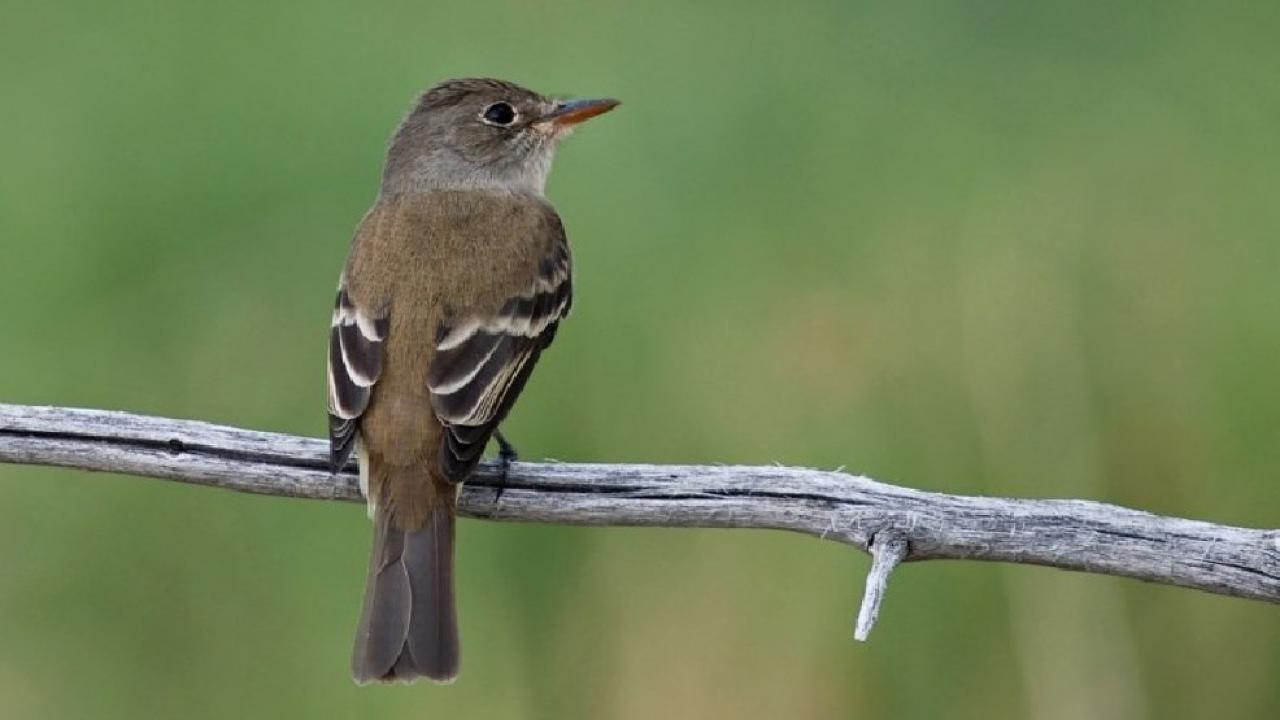
New Faculty Rachael Bay Receives NSF Grant to Study Environmental Adaptation in Willow Flycatchers
Quick Summary
- Rachael Bay will investigate how the Southwestern Willow Flycatcher deals with rapid environmental change
- She'll investigate the heat tolerance of the bird, trying to understand how genetic variation relates to its physical adaptation
- She and her team will then use the bird's genomic data to make connections between it, morphology and physiology
During the summer breeding season, an endangered songbird makes its home in the desert brush of the American Southwest. The Southwestern Willow Flycatcher is one of four subspecies of Willow Flycatcher spread across North America, but it’s the only one considered federally endangered. According to U.S. Fish and Wildlife Services, the destruction of river environments in the region has led to this subspecies’ decline.
For years, Assistant Professor Rachael Bay, Department of Evolution and Ecology, has studied how species like the Southwestern Willow Flycatcher adapt to rapidly changing climates.
“We’ve spent a lot of time identifying connections between genetics and climate,” said Bay, who joined UC Davis in July. “Willow flycatchers in that subspecies have genetic variation related to higher temperatures that looks quite different than the other subspecies, and they inhabit a really hot, dry climate of the US Southwest so that makes sense.”
Thanks to a roughly $300,000 grant from the National Science Foundation, Bay and colleagues will further investigate how the Willow Flycatcher deals with rapid environmental change, with the goal of linking physiology, morphology and genomics to create a comprehensive map of the species’ adaptation.

Big data and biology
Bay learned about the genomics field while earning a master’s degree in biology at Dalhousie University in Nova Scotia, Canada. She found her skillset and background in mathematics aligned with computational biology, a field combining computer science, big data and biology.
“Traditionally, we thought of biology as a natural science, where people go out into nature and sort of characterize things or observe things,” said Bay. “That still is very true, but now we have all these technologies that are allowing us to incorporate massive amounts of data into our science, and for that, you need to have computing and quantitative skills.”
Using these methods, scientists may one day be able to predict how a species will deal with a particular environmental stimulus, such as heat. But coming up with accurate predictions requires understanding that specific species’ heat tolerance and how it relates to genetic variation.
“We can look at the thermotolerance of this bird and we can say, ‘Okay, when we exceed that, they won’t be around anymore,” said Bay. “But that may not really be true because evolution happens. So understanding genetic mechanisms and how they might change over time can help inform better predictions.”
The genoscape of migratory birds
Bay’s project, which is being conducted in collaboration with Assistant Professor Kristen Ruegg of Colorado State University and Professor Blair Wolf of University of New Mexico, is part of a larger effort called the Bird Genoscape Project. The project aims to develop “connectivity maps of 100 species of North American Migratory birds,” including the Willow Flycatcher.
According to Bay, researchers on the project will collect birds in New Mexico and record physiological traits, including bill, wing and body size, among other measurements. Previous studies have shown that larger bills might be able to dissipate heat faster, acting as a cooling mechanism for birds.
After collecting the birds, researchers will then expose them to a heated chamber. A thermal transponder will measure how birds’ bodies respond to temperature increases.
“We heat them up slowly, not to where they’re really stressed out, but so that you can understand how their body temperature relates to environmental temperature and how quickly they’re able to keep up,” said Bay. “We can then understand some of the parameters associated with that heat-stress physiology.”
Additionally, blood samples will be collected and sent to UC Davis for processing and sequencing in Bay’s lab. The team will then sift through the genetic data, making connections between it and collected morphological and physiological data in an attempt to figure out how different genetic variants are connected to thermal adaptation.
“Genomic tools for non-model organisms are becoming easier to use and cheaper,” said Bay. “Maybe 10 years ago, we could only hope to do such studies in flies, and mice and humans, but now we can make a genome for any animal we want.”
